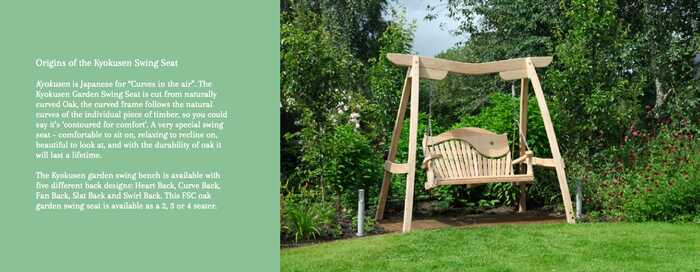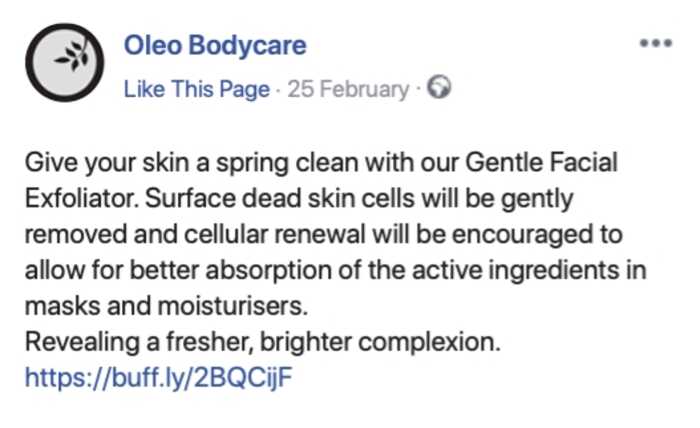How To Create Effective Product Descriptions That Sell
Your customer has found your website and is looking at your products. What’s the final hurdle in convincing your prospect to buy?
An effective product description.
Product descriptions seem simple, but bad ones can break a sale. According to Shotfarm, sloppy product descriptions have serious impact in returns, shopping cart abandonment and brand trust, which takes time and money to fix.
The good news is that writing great product descriptions is easy when you follow these simple tips – no matter your industry.
Here are seven methods of creating brilliantly effective product descriptions that sell.

#1: Know Your Product
By knowing every single thing about your product, you can tease out the information that will trigger a prospect’s interest and encourage a sale.
For example:
- Dimensions, materials, functions – what is it made of?
- Product features – what does it do? How is it used?
- Product benefits – why is it useful?
- Product competitiveness – why is it better than your competitors?
- Who is the target audience?
Answering these questions puts you in a brilliant position to start writing your product description – after all, who knows your product better than you?
#2: Know Your Target Audience
Combining your detailed knowledge of your product means you can angle your product descriptions to directly appeal to your target audience.
The better you understand your audience, the better you can sell to them - simple.
Start by compiling a basic buyer persona, including information like:
- Personal demographics - age, gender, location
- What they’re interested in
- Education and income
- Lifestyle
- Challenges and pain points
Developing a buyer persona means you can get to grips with what your ideal customer needs and wants, enables you to speak their language, predict their objections and structure your descriptions to make the best possible impression – and effectively encourage a sale.
For example, this Kyokusen swing seat from Sitting Spiritually is tailored specifically to its audience.

The product name clearly defines the seat as high-grade, relaxing and Japanese-inspired. This attracts customers interested in high-end, beautiful and, importantly, unique products.
Luxury products like these benefit from a more developed background story. Including the story of the product, such as the original concept and what inspired it, assures customers that they’re purchasing a truly premium product with rich history.
This isn’t always necessary – printers, for instance, don’t need unique backstories – so consider the product details and the target consumer to gauge how much information they will need to make a sale.
Knowing your customers well means you can also predict what their questions would be – how much does something cost? What is it made of? How long might it last? Where was it made?
Answering these questions pre-emptively builds trust and shows you’re confident in your product and an expert in your field.
#3: Use The Right Language
The language you use should resonate with your customers, like you know them inside and out. This means that your product descriptions might sound very different from another company, because your customers bases are different.
For example, the Bluebeard’s Revenge sells barber-grade men’s products. Their brand is punchy and “manly” (and very self-aware!) This alum block (for sealing nicks after shaving) is written like a pub sales pitch:

It’s not for everyone – but that’s absolutely fine. It appeals to their core consumer base and makes the brand stand out in a saturated market. Everyone else might hate it, but their customers love it, and will keep buying.
Conversely, this Oleo Bodycare product is written in a calming and sensory way with soothing language, promising potential customers a product that will fit seamlessly into their routine – rather than making a bang like the alum block.

Top tip: don’t use superlatives like “best in the world” unless you have clear proof, no matter how tempting it might be. Inauthentic content isn’t the best way to win a customers’ trust, and might get you in trouble. Instead, cite the most impressive benefits of your product to increase the ‘wow’ factor, or show off rave reviews and ratings.
#4: Scannability
Eye-tracking technology shows that most customers don’t read every word on your webpages – in fact, the Nielson Normal Group showed that only 16% of customers will scrutinize every word on a webpage.
So how can you write product descriptions that capture their attention? By structuring them for scannability.
This means breaking up text to guide readers through the most critical pieces of information, even if they’re only skimming.
Highlight important elements, use subheadings to break up topics and use bullet lists to make skimming features quick and easy so customers aren’t forced to search for answers.
That doesn’t mean use bullet lists exclusively, which can look clinical. Combine bullet lists and paragraphs to paint the best picture of your product.
Top tip: why bother to write well if customers only skip across the headlines? If your headlines do their job, the customer will go back to read the description properly, so make sure it’ll be worth the read.
#5: Optimize For SEO
SEO (search engine optimization) sounds scary, but it’s imperative in successful web content.
A bit of keyword research will help you understand which keywords are best for your products.
Use the keyword in your product title – it’ll rank better that way. You probably won’t rocket straight to the top of Google, but your products will be much easier to find, particularly for customers actively searching for related items. Want to learn more? For some tips check out the top 3 reasons your website isn't ranking.
#6: Use Quality Images
You might be the best writer in the world, but a high quality image will almost certainly impress customers more. In fact, Visual content is 40 times more likely to be shared on social media.
Make sure the images in your product descriptions are clear and uncluttered, making the product the centrepiece. Use a JPEG image, or a PNG if the background is transparent (ask your web designer for help). Make sure it’s scalable so it doesn’t get fuzzy or pixelated when viewed on bigger or smaller screens.
This picture shows the van graphics product to its best, with rich, clear colours and detail. This is clearly a quality product, and showing it ‘in situ’ helps the customer imagine their own product – according to Irrational Agency, the more they can imagine owning it, the more likely they are to buy.

Don’t forget to add “alt tags” – these are short, descriptive bits of text that describe the image and will appear if the image fails to load. These are useful for SEO rankings and for visually impaired customers.
#7: Get A Professional To Get It Right
Using these six hacks make writing effective product descriptions a lot easier. But they can still be time-consuming, and a little intimidating if you’ve got lots of products – or just aren’t sure where to start, there's a lot of benefits to outsourcing your marketing.
We can help – here at Sonder, we understand that the right content can make all the difference. We can help craft product descriptions that sell, tailored to your audience and tailored to you.
Get in touch to discuss your requirements, or sign up for our newsletter for more helpful tips on how to make your website work for you.
Posted by Ange Swan on April 9th 2019
